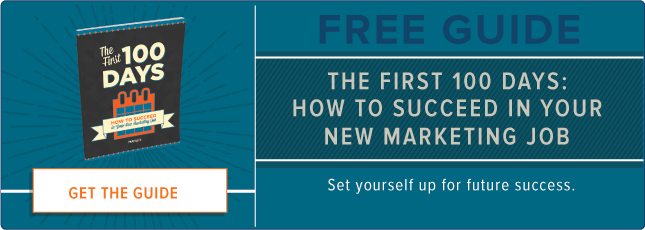
I already know what you’re thinking. You saw the words content marketing and strategy together in the headline and thought, “Oh, cool, another article telling me how important it is to have and actually write down my strategy -- just what I need.”
Don’t worry, that’s not what this is.
You already know that having and documenting your strategy is important because you’ve probably read the same reports and case studies that my team and I have read. But there’s a pretty big difference between knowing you should do something and knowing how to do it -- which might explain why 89 percent of B2B marketers use content, yet only 37 percent have documented strategies.
The marketing team at Influence & Co. spent the last couple months of 2016 carefully researching, planning, and creating a content marketing strategy for this year. What follows is an exploration of exactly which elements our team determined a successful plan must include to drive results, empowering you to create your own documented content strategy.
How to Document Your Content Marketing Strategy
Part of what makes a documented strategy so powerful is that every person on your team -- from your content creators to your senior-level directors and everyone in between -- can see what, why, and how your company is communicating.
This alignment makes it easier to get buy-in, crowdsource content, and pull employees into the distribution process, and it makes your efforts stronger because it extends your reach beyond the marketing team.
For your strategy to be helpful to your whole company and not just your immediate marketing team members, it has to address a few major questions, like:
- Why are we utilizing content marketing as a strategy?
- Who are we trying to reach with our content?
- What are we hoping to accomplish?
- How does this fit into our overall marketing strategy?
- How will we measure success?
If you start with these questions in mind, the actual pieces of your strategy should come easily. In fact, each of the following components of your strategy should help you clearly answer those questions, align your team, and hold you accountable. Here are seven key elements your content marketing strategy must include:
1) Overall Mission
Before you get too far into the weeds, ask yourself, “What’s the real reason we’re investing in content?” And if the answer is anything close to “Well, we just know we should be doing content,” stop immediately and spend more time thinking about why you’re making this critical, valuable, and time-consuming investment in the first place.
If you do have a well-thought-out answer, write it down. Are you preparing to use content so your marketing team can generate leads and attract new customers? Are you trying to build brand awareness and credibility?
No matter your reason for investing in content marketing, it needs to take a prominent place at the beginning of your strategy; that overall mission will guide the rest of your document and keep your team on track when it’s time to execute.
2) Target Audience Personas
You may have included some general ideas about your audience members when you outlined your mission, and while that’s a helpful place to start, it’s not nearly detailed enough to start creating content for them.
Before you craft any content or develop any distribution plan, you have to know who you’re trying to reach. You aren't creating content for the general public, you’re creating it to attract specific individuals who can contribute to your company’s goals.
You need to research and create detailed audience personas. If your personas inform the content you create, your content will do a much better job of speaking to the exact audience you’re targeting.
3) Content Mix Plan
Once you know why you’re creating content and for whom, you can determine what type to create. Depending on what your marketing funnel looks like, you’ll need a couple different types: content that educates and engages prospects at the top of the funnel and encourages them to learn more, as well as content for the bottom of the funnel that answers very specific questions and addresses objections to working with you.
That content can take any number of forms, from guest-contributed articles on online publications to blog posts, white papers, email campaigns, sales enablement materials, and more. What’s especially important here is thinking through the variety of earned, owned, and paid media you’ll need to keep prospects moving through this funnel.
4) Content Creation Process
You could follow each of the above steps exactly and still fall flat on your face when it’s time to actually put pen to paper. Creating content of your own and turning your company leaders into content creators takes time and effort.
So before you dig into executing your content plan, determine which processes, workflows, and resources make the most sense for your team. Perhaps taking advantage of content creation tools will make your job easier, or partnering with an agency to help may be a better solution.
5) Editorial Calendar
Consistency is key in content marketing. It’s your opportunity to build trust with your audience members, nurture them, and become a resource for them. Once you know what kinds of content you need to create, it’s time to develop a calendar or schedule to make sure you deliver.
Your editorial calendar should detail how often you need to publish to keep your audience engaged and when you’ll distribute your published pieces. Mapping out your target deadlines for different pieces will keep your process on track.
6) Distribution Plan
Distribution is all about getting your content to the right people at the right time. That can mean publishing articles in publications your target audience members are already reading, using a paid distribution plan on social to attract readers to your white paper, or simply including your content in your email newsletters.
Your distribution plan should be part of your documented strategy because knowing where and how you plan to distribute your content informs the type of content you create, how often you do it, and which processes you utilize. It’s a key part of your content marketing strategy, so don’t start executing the strategy until you’ve thought it through.
7) ROI Calculator
Remember when you identified your overall mission at the beginning of this document? You need to identify from the beginning how you’re going to measure success with this campaign, and now’s your chance to match metrics to your goals to gauge how well your content is helping to achieve that mission.
Set some benchmarks you want to hit concerning traffic to your website, leads generated, or opportunities created through content, and set up a plan for tracking this using anything from your own modest spreadsheets to a robust software package.
If this documented strategy seems like a lot, that’s because it is. Nobody said that content marketing was simple, but it’s well worth the investment, especially when you set yourself up for success. And with these seven must-have elements detailed in your documented content strategy, your team will be off to a fantastic start.

No comments:
Post a Comment